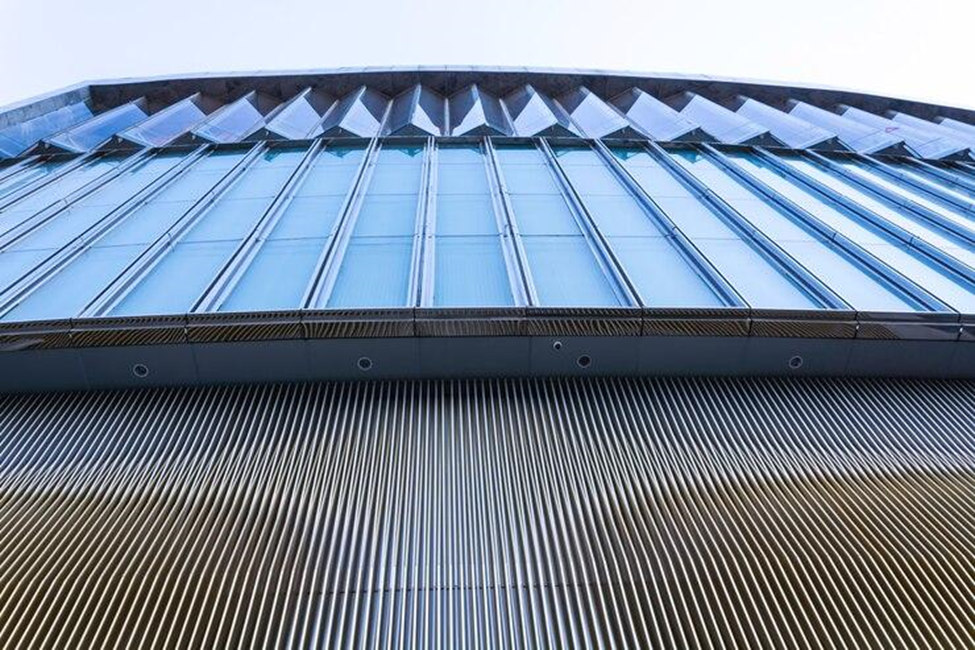
Commercial Roof Installation: A Step-By-Step Guide
Whether it covers an office, retail outlet, warehouse, or factory, a commercial roof protects people as well as valuable assets. These roofs are often large and structurally complex, owing to sophisticated insulation and drainage systems as well as the presence of skylights, solar panels, and so on. They also have to comply with distinct building regulations and meet set standards for environmental and fire safety as well as accessibility. Hence, commercial roof installation is a process that requires detailed planning and careful execution. Whether you want to set up a new roof or replace an existing one that is aging, leaking, cracking, or not energy-efficient enough, hiring experienced, licensed, and insured roofers is a must. They can manage the project end-to-end and suggest tailored solutions to suit your specific needs and budget.
Now, let’s delve into the individual steps of commercial roof installation in the UK
Inspecting the Roof
A contractor who provides commercial roofing services will thoroughly inspect the roof, assess its condition, check the extent of damage, and determine if the structural integrity is in trouble. They will especially focus on the flashing, seams, any weak spots in the insulation, and leaky areas. The roofer will gather all necessary information to chart out an ideal course of action.
Choosing Materials
Commercial roofers in London usually use materials like felt, rubber, or fiberglass while installing or replacing a flat roof. And they can guide you towards the most suitable option based on your budget and requirements. For instance, while felt is more pocket-friendly, rubber andfiber glass are more durable. The contractor will consider the aesthetics, strength, and workability of each material before coming up with the best possible solution.
Developing Blueprints
In collaboration with architects and engineers, a professional roofer will arrive at a roof design that adheres to local building codes, has the right slope and drainage, is appropriately insulated and protected against moisture, and will perform well over a long time to come. They will chalk out detailed plans and blueprints after accounting for functional and aesthetic specifications, whether it involves accommodating heavy machinery on the roof, incorporating commercial roof windows, or integrating HVACs.
Estimating Costs
Wondering how much does a new commercial roof cost? It will not only depend on the roof’s size and intricacies, but also the material chosen, the project’s duration, and additional features like vents, skylights, and insulation. The roofer’s experience and reputation, labour charges, as well as safety measures required and roof accessibility will influence the total cost of installation too.
Obtaining Permits
The roofing contractor will provide different regulatory authorities with detailed plans to obtain essential permits and stay on the right side of the law. This will also ensure the safety of those working on the project as well as the building’s occupants. You might need permits for the building (to comply with local regulations),zone (to comply with laws on height restrictions etc.), and environment (to ensure the safety of local surroundings).
Planning Logistics
To make sure the commercial roof installation process goes smoothly, the contractor will schedule the ordering of raw materials and delivery of the same besides coordinating with sub-contractors. They will make sure the project is not disrupted and is completed efficiently and on time.
Implementing Safety Measures
The roofer will implement stringent protocols to ensure both workers and those in and around the building stay safe. Apart from giving labourers safety equipment, the contractor will brief them on standard procedures and secure the area of work with barricades. Measures will be taken to prevent falls, accidents, and injuries.
Removing the Old Roof
Commercial roofers in London will first remove the old roof completely, along with components like flashing and underlayment. They will dispose all the debris in a responsible manner by sending them to a landfill or for recycling. Post removal, the site will be carefully cleaned and primed andthe roofer will examine the decking to make sure it can hold up the new roof. If any area is damaged, commercial roof repairs will be carried out before the new roof is set up. The contractor will also scrutinise the invisible layer that supports the roof (called substrate) for wear and tear. They might repair or replace the same depending on the extent of damage.
Installing the New Roof
Depending on the material, the contractor will follow specific steps to lay down the new roof. For example, in case of flat roofs, a base layer might be topped by insulation and commercial roof cladding to prevent water ingress, followed by the chosen roofing material. The roofer will ensure precision while installing the multiple layers and fastening or welding them together. They will also take care while installing flashing, drains, vents, and curbs.
Conducting Final Checks
The contractor will check the newly installed roof thoroughly to make sure it meets all quality standards and specifications and will last long. They will inspect every little detail, including downspouts, flashing, and gutters, besides conducting leak tests. If required, they will resolve issues promptly to strengthen the integrity of the roof.
Cleaning Up and Handing Over
To round off the commercial roof installation process, the roofer will clean up the site and remove all debris and tools so that the aesthetic appeal, functionality, or safety of the roof is not compromised in any way. They will also provide warranties on their workmanship along with compliance certificates and guides on maintenance of the new roof. The contractor will ensure you are satisfied with the final outcome and can even outline a schedule for routine maintenance to prevent issues in the future.
Conclusion
Now that you know about the steps involved in the installation of a new roof for a commercial property and also have the answer to ‘how much does a commercial roof cost’, get ready to hire a skilled, dependable, and expert contractor. Also remember that conducting periodic maintenance and handling minor repairs before they become severe can help you avoid frequent roof replacements. However, if you need to install a roof for the first time or replace a heavily damaged one, research multiple contractors in the UK and compare their services. Request quotes from them and check what past customers are saying about their professionalism, knowledge, timeliness, and work quality. Or just get in touch with Fast Roofing professionals and say goodbye to stress.
